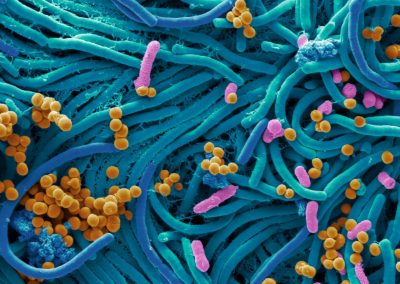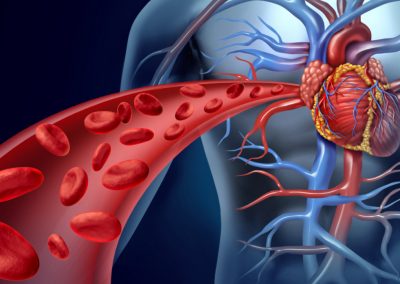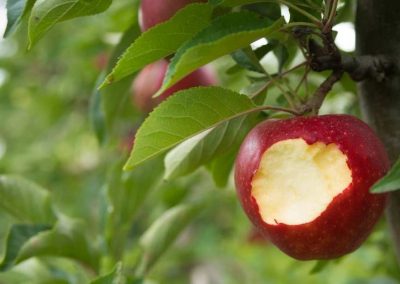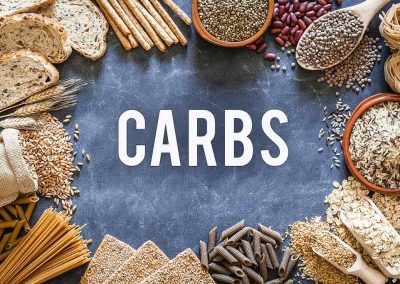Free
60mins
Eating Sustainably Without Nutrient Compromise
Elphee Medici
Eating Sustainably Without Nutrient Compromise
Elphee Medici
Free
60mins
CONTENT AND LEARNING OBJECTIVES
CLEAR UNDERSTANDING OF:
- What Eating Sustainably entails
- Why the urgency for shifting populations to eat sustainably?
- How to eat sustainably without compromising nutritional status
BE AWARE OF:
- Key impact of our current eating habits on the environment and global health
- Common misconceptions & misuse of the term plant-based eating
- Common misconceptions about the nutritional adequacy of plant-based sustainable diets
- Situations where nutritional supplements should be encouraged
- Credible references for further reading
BE ABLE TO:
- Confidently encourage all clients / patients to follow sustainable eating patterns
- Provide credible and practicable plant-based eating advice that will improve nutritional status
Please note, webinars are not intended to be used by non-medically qualified individuals or as a substitute for, or basis for any medical treatment.
Help us to continue providing expert nutrition learning
If MyNutriWeb has helped you deepen your knowledge of dietary and nutritional subjects, join us to help support and educate people to eat well for themselves and the planet. Read more...

Expert speaker
Elphee Medici
Nutrition & Health Communications Lead, Nutrilicious
A highly skilled and passionate dietitian with over 30 years’ experience including 10 years in the NHS. Before going freelance, Elphee worked as the in-house dietitian for various FMCGs including Alpro, Unilever & Yoplait -successfully executing healthcare and consumer wellness programmes – always ensuring the science was never misinterpreted. Her core expertise includes critiquing scientific research and interpreting findings into practical implications and meaningful public health messaging. She has produced various evidence-based scientific and consumer publications on health issues such as bone health, vitamin D, soya isoflavones, plant-based diets, child health and heart health including the Ultimate Cholesterol Lowering Plan©.
Elphee is most proud to
- Have worked with the BDA dietetic team on the development of the recently launched One Blue Dot® project providing a scientific review of the evidence for sustainable diets and the nutritional implications for the UK public.
- Be one of the originators of the Ultimate Cholesterol Lowering Plan© (UCLP©) alongside HEART UK and 6 other leading experts. She is also leading on the latest scientific review and update of the UCLP© due to be released this month.
WEBINAR HOST AND MODERATOR
Tanya Haffner, MD RD Nutrilicious.
CPD CERTIFICATE & LEARNING MATERIALS
Applications for CPD approval have been made to the British Dietetic Association (BDA) and the Association for Nutrition (AfN).

Once you have viewed a full recorded webinar the mynutriweb team will review and arrange to send you your certificate via email from hello@mynutriweb.com within two weeks of viewing the webinar.
Popular Now

Dr Emily Leeming: Gut-Brain Axis: Food, mood and your gut microbiome

Dr James Kinross: Faecal microbiota transplants: how it works and why it doesn’t

Probiotics in the Management of Gut Disorders: What is the evidence?
Q&As
Why don't we promote a 100% plant-based diet among health care professionals at least if not across the population? If a vegan diet is the most sustainable, why don't we promote vegan diet? But do we have to include meat and dairy though? I feel it’s important to state that healthy individuals don't have to have them
The evidence clearly demonstrates that the greater the shift to healthy plant foods and the lower the intake of animal foods the better outcome for both human and planetary health. Thus, vegan diets – which are balanced, varied, incorporate healthy plant foods and supplements where indicated – would provide the best health outcomes for both humans and the planet. It cannot be disputed however that although all essential micronutrient needs can be met with vegan diets, it is far easier and less complex to achieve this when some meat, dairy and fish is included.
Dealing with public health messaging, we have to apply the science in context of population groups and individual consumers. Behavioural science has to be considered.
With few people achieving healthy eating guidelines (less than 1%) despite decades of public health messaging, to push 100% plant-based eating patterns is not realistic and in fact highly likely to switch the majority of the population off altogether.
How plant-based someone goes will vary from person to person; personal choice, how motivated they are, how healthy their diet already is, religious and cultural beliefs, how much support they have, cookery skills, income, etc. The evidence supports that even small dietary improvements will provide both human and environmental health benefits. Flexibility is paramount to allow different population groups to adopt a healthy and sustainable diet.
Key is to get the population to focus on eating more healthy plant foods.
And finally, the science is clear that the food environment surrounding individuals has to change if we are to make plant-based eating a reality. Thus, until the environment changes to only promote healthy plant foods and make them accessible, attractive, and affordable, it is unlikely that we will see any improvements.
How achievable do you think the Lancet’s recommendations are for those in low income countries?
I think this was covered in the presentation. The EAT Lancet recommendations are not meant to be applied directly to individual countries. The EAT Lancet has made it clear that these are just guidelines and each country has to adapt the recommendations according to their country needs including culture, affordability, accessibility, food safety, consumer acceptability, nutritional needs etc. In fact, EAT Lancet recommends increase in red meat intake in deprived countries who do not consume any appreciable amounts of meat and whose iron, vit B12 and protein levels are low. The aim of the EAT Lancet recommendations is to highlight how diets globally have to change to be more plant-based but how exactly this occurs will differ from country to country.
Why does EAT Lancet not substitute dairy to plant-based milks i.e. soya or oat?
The EAT Lancet actively promotes soya within the protein foods section. It has not specified plant-based drinks within the dairy section as their key argument is that a ‘dairy food group’ is not essential as calcium intakes can be met through plant foods. From a practical perspective, to remove the dairy group altogether from their recommendations would not be practical, especially in the western world. Anecdotally, when I have asked a member of the EAT Lancet group about plant-based drinks, they are neutral about them and of course emphasise that they must be calcium fortified. In the UK, advice is either dairy or sugar free calcium fortified plant-based drinks. It is a personal choice.
(Protein requirements) Is this based on the 0.8g per kg bodyweight guidelines? I see more and more talk of the 0.8 being regarded as low - not just in athletic populations. Opinion?
Yes, the recommendations for an average adult of a healthy body weight who is moderately active is 0.75-0.8g protein/kg body weight/day. This is accepted by the majority of the scientific world. Requirements based on kg body weight would in fact be lower if we consider that the majority of the western population is overweight and obese! Clearly, there are population groups that will fall outside this ‘average adult’ requirements. One group is athletes who will require more protein. Depending on frequency, type and intensity of the activity, a professional athlete’s requirements can vary from 1-2g/kg body weight/day. Unfortunately, few of the general population undertake enough physical activity to warrant higher protein recommendations. As mentioned in the presentation, the evidence is growing that the elderly (65 years and older) should be encouraged to consume 1-1.2g protein/kg body weight/day in addition to regular weight bearing exercise to maintain muscle mass and reduce risk of sarcopenia. Leucine is a key amino acid for muscle protein synthesis and plant foods provide adequate amounts. The latest advice for optimum muscle protein synthesis on a purely plant-based diet is the consumption of 20-30g plant proteins at each meal. Exceeding this amount at one sitting will not add any further benefit.
The ability to match the recommended daily intake of 0.75g/kg body weight/day was highlighted as achievable. Is there any research into the ability to meet higher protein intakes via sustainably approach?
Evidence was presented of actual protein intakes across different dietary patterns. All exceeded this recommendation even vegans reached 1g/kg body weight/day. There are numerous studies showing vegans consuming this level of protein.
Mariotti & Gardner. Dietary Protein and Amino Acids in Vegetarian Diets-A Review. Nutrients. 2019;11(11). pii: E2661.
I have been told that not all plants contain all the essential amino acids within them, now I am confused, could this be gone through slightly in more detail please Do you mean every plant has every amino acid or all amino acids can be found in plant foods?
Each plant does contain all 20 amino acids including the 9 indispensable/essential amino acids. Apart from a few individual plant foods (e.g. soya and QuornTM) most individual plant foods will be low (not devoid) in one or two amino acids including essential amino acids. Nitrogen balance occurs over a 24-hour period, thus, if you consume toast at breakfast (wheat low level of lysine) and then beans at lunchtime (good lysine levels) your body will complement the amino acids. The evidence is clear that as long as an individual meets energy requirement, all essential amino acid needs will be met.
Mariotti & Gardner. Dietary Protein and Amino Acids in Vegetarian Diets-A Review. Nutrients. 2019;11(11). pii: E2661.
Ahnen et al. Role of plant protein in nutrition, wellness, and health. Nutr Rev. 2019;pii: nuz028.
Was there any difference in bioavailability in dairy and non-dairy calcium?
Low oxalate green leafy vegetables e.g. Pak choi, Broccoli, Kale have a higher calcium bioavailability than dairy. Calcium found in fortified soya drinks and calcium set tofu is marginally lower than dairy, but this is not clinically significant.
Zhao et al. Calcium bioavailability of calcium carbonate fortified soymilk is equivalent to cow’s milk in young women J Nutr. 2005;135(10):2379-82.
Heaney et al. Bioavailability of the calcium in fortified soy imitation milk, with some observations on method. Am J Clin Nutr. 2000;71(5):1166 9.
Weaver C et al. Choices for achieving adequate dietary calcium with a vegetarian diet. Am J Clin Nutr. 1999;70(3):543S-8S
When do you consider calcium supplementation for vegans?
If a healthy individual is following a varied and balanced vegan diet which includes plant-based calcium rich foods, there is absolutely no reason to supplement with calcium. Calcium is ubiquitous in the diet. The only instance would be when requirement are increased such as if at risk of osteoporosis/low mineral density but the advice on supplementation would be the same as for omnivores.
Why do women have lower calcium intakes?
The issue is more with teenage girls who unfortunately have low intakes of the majority of essential micronutrients. This reflects more their poor overall dietary intake. Interestingly, 12% teenage boys are also low on calcium intakes.
Why do women have lower iron intakes?
Teenage girls and women of child-bearing age in the UK have poor iron intakes (as well as calcium and other key nutrients) which does reflect their overall poor dietary habits. Their actual intakes of iron as grammes per day are not significantly lower than men’s: intakes for 11-18 year old males is 10.4g iron/day and for females is 8.3g iron/day whilst intakes for 19-64 year olds is 11.6g iron/day for men and 9.3g for women. However, the requirements for women 11-50 years are significantly higher compared to men, 14.8g per day for women compared to 11.3g (11-18yrs) and 8.7g (19-64yrs) for men. This means that a significantly greater proportion of women consume iron well below the lower recommended nutrient intake (LRNI): 54% 11-18 year old girls and 27% of 19-64 year old women do not meet the minimum requirements (LRNI) vs 12% and 2% of men respectively.
Even though we focused a bit more on female populations as they seem to be more at risk, is there something to be considered for the male population instead?
Men tend to do much better with regard to iron intakes and status across all dietary groups. It is well established that men consume much greater volumes of food and are the biggest red meat eaters. Additionally, men’s iron requirements are much lower than pre-menopausal women, 8.7g and 14.8g respectively for adults. As iron is particularly important in foetal brain and neurological development, the focus on women’s iron intake becomes even more important. Teenage boys have the worst intakes with 12% not meeting their minimum requirements (LRNI). When it comes to iron stores, 9% of girls and boys aged 4-10 years have low ferritin stores, however in older age, especially teenage hood, 24% of girls fall outside the normal threshold for ferritin stores compared to 2% of boys. Despite these differences it is paramount that all sexes are provided with healthy balanced nutrition advice that optimises all micronutrient intakes.
Tofu is also high in iron.
This is true, and I am kicking myself for not including. The content varies depending on the water content. Thus, firm tofu that is steamed would provide approx. 1.2-1.5mg iron per 100g, whilst fried tofu (lower water content) would provide up to 3.5mg per 100g.
What about vitamins B12 and D as these are only found in animal foods.
Vitamin B12
Vitamin B12 sources are indeed animal foods however, a number of foods are now fortified. Someone following a plant-based sustainable diet containing moderate amounts of meat and dairy will be fine. However, if someone chooses to follow a vegan diet, then their options are:
2-3 servings of fortified foods daily: majority of plant-based drinks (non-organic) and yogurt alternatives are fortified and most breakfast cereals. Yeast extract is also fortified but due to the high salt content may not be appropriate.
Supplements: daily 10mcg supplements would be most effective or an alternative is one 2,000mcg weekly dose.
Vitamin D
Vitamin D food sources are scarce and the richest sources – oil-rich fish and cod liver oil – are rarely consumed. All individuals consume insufficient vitamin D. The major source is sunlight during the months of April through to September and during the hours of 10am and 2pm. Outside these months, we rely on our stores and food sources. The government recommends 10mcg daily supplements throughout the year for all at risk groups including children under 5 years and those with dark skin, and for winter months, all should consider a supplement.
Vitamin D and dairy
Some countries such as Finland, Canada and the United States fortify their milk with vitamin D. The majority of European countries, including the UK and Ireland, do not standardly fortify milk thus it is not a source of vitamin D. In contrast, non-organic plant-based drinks and alternatives to yogurt are in the main fortified. It is important to bear this in mind when reading research papers on this topic as many come from the US.
How do phytates, polyphenols and tannins affect iron absorption?
Phytates naturally found in plant foods will bind to non-haem iron and zinc in the gut to form insoluble complexes that cannot be digested or absorbed.
Interestingly, some small studies have demonstrated that the body can adapt to high phytate intakes with regard to iron bioavailability. Studies undertaken over 8 and 12-week periods have shown increased efficiency of iron utilisation in the body and reduced excretion.
Polyphenols including tannins which are found in vegetables but especially in tea and coffee will also bind with non-haem iron to form insoluble complexes which cannot be digested or absorbed. Tannins do not seem to affect zinc.
Oxalates are found in beans and dark green vegetables as well as coffee, and chocolate. Like phytates and polyphenols, will form insoluble complexes in the gut which reduces calcium bioavailability.
Reducing phytate content of plant foods
Although we cannot remove phytates from plant foods, many food processes and cooking methods can help lower levels.
Fermentation can breakdown of phytic acids e.g. fermented soya products such as tempeh and miso and yeast leavened bread (microbial fermentation) will enhance the bioavailability of iron.
Soaking of legumes and beans will diffuse water soluble phytic acid into the water. Thus, rinse canned beans well!
Sprouting of beans and legumes – although not common practice nowadays – enhances the activity of naturally occurring phytase enzymes in plants which breaks down phytates.
High temperature food preparation e.g. canning can reduce phytic acid content of legumes and beans, however, the effect is highly variable.
Milling and refined cereal. For the majority of cereals e.g. wheat, rice, and rye, phytates are present on the outer layers, therefore extraction of the outer layer.
Plant-based drinks: as the base ingredient e.g. rice, oats, soya, nuts are soaked and ground and then heavily diluted – the level of phytates and other inhibitors is negligible and will impact little on calcium bioavailability.
Enhancing iron and zinc bioavailability
As well as cooking and food preparations (see above).
Vitamin C foods or drinks e.g. salad, fruit juice, served with the non-haem plant foods is the single biggest enhancer of iron absorption.
Small quantities of meat, fish or poultry served with non-haem foods. Meat flesh components including soluble lignans help to improve both zinc and iron bioavailability.
Consuming tea and coffee away from mealtimes.
Low zinc and iron status or if demands are increased, the body will increase absorption of the minerals.
High dose zinc supplement intakes will reduce zinc absorption from foods.
What is your opinion on how achievable plant-based diets sustainable diet recommendations are for those on very low incomes, with limited cooking facilities and time for food prep?
A very timely questions and this has been tackled by a number of studies.
The Eatwell guide undertook cost assessments comparing current eating habits with the Eatwell guide recommendations and found the cost to be a little lower for the Eatwell guide. However, they only looked at food costs and not preparation.
A more recent study by Reynolds from the Rowett Institute, Aberdeen, investigated the feasibility of shifting towards a more sustainable eating pattern by income quintiles in the UK. The study highlighted that all income groups can eat more sustainable within their budget constraints and the key message of increasing plant foods and reducing meat and dairy was applicable to all incomes. The study also found that more tailored advice is needed as different income groups will need to adapt their diets differently e.g. higher income groups can more easily afford to make sustainable changes, the types of meat consumed differed by income groups and the type and variety of fruit and veg also differed. In a follow up interview with the lead author by MyNutriWeb, the Reynolds provided more detail around their study. They also investigated cooking methods and consumers attitudes to sustainable eating. Interestingly, the most sustainable form of cooking was using the hob or the microwave which are also the least expensive ways of cooking.
Eatwell guide: Scarborough et al. Eatwell Guide: modelling the dietary and cost implications of incorporating new sugar and fibre guidelines. BMJ Open 2016;6:e013182.
Publication: Reynolds et al. Healthy and sustainable diets that meet greenhouse gas emission reduction targets and are affordable for different income groups in the UK. Public Health Nutrition 2019;22(8):1503-1517
Listen to the Expert Interview with Reynolds: https://mynutriweb.com/is-a-sustainable-diet-more-expensive/
Are there any significant differences in bioavailability in supplemented micronutrients and plant-based food micronutrients?
This will depend on which nutrient is under discussion. Please see earlier question on calcium.
There is still goitre and thyroid dysfunction in the global South, can you clarify that there have been no cases of them only in Western populations since the 70s?
Goitre and thyroid dysfunction still arise in the Western world however, incidences are low and now rarely caused by dietary iodine deficiency whereas up to the 1950’s goitre was rife in the UK due to lack of dietary iodine. Goitre in the UK is often a result of a medical condition such as over or underactive thyroid gland. I cannot comment on global incidence of Goitre.
Why is there such a difference in iodine in seaweed?
Unfortunately, natural sources of iodine foods will all have highly variable levels including white fish. Iodine content will vary depending on where it is sourced, the season, cooking and preparation methods as well as the specie and type of seaweed and fish. Kelp is the most variable and one that provides the highest values. Kelp can provide up to 6,500 mcg per g. Nori is more modest with values ranging from 16mcg to 185mcg per gram.
Feature in a Webinar
Webinar guest experts encompass topics relevant to all professionals and change agents in food and health, across all health and business sectors.
Would you like to feature in a webinar, or propose a guest expert?
Sponsor a webinar
MyNutriWeb offers organisations and brands an opportunity to sponsor topics, gaining valuable insights into the viewpoints of professionals within a moderated environment. If there is a topic that you would like to support please get in touch to discuss.
This website is intended only for students or professionals working in food, nutrition and health. If this is you, please click to continue.



